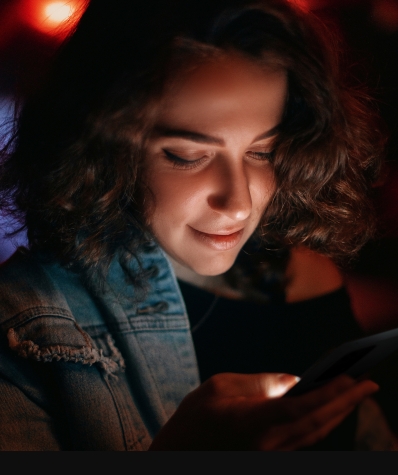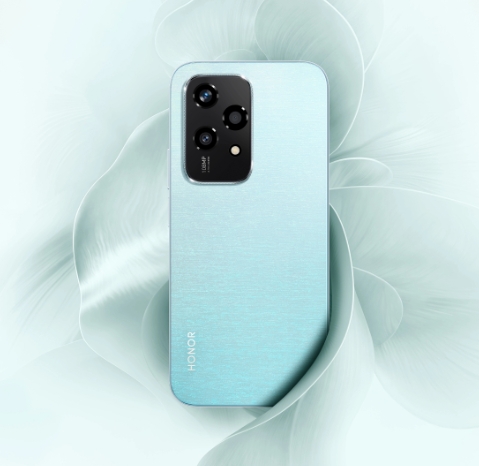Staring at smartphone screens for long hours has become unavoidable in daily life. Whether scrolling through social media, reading emails, or watching videos, our eyes are constantly exposed to bright displays and blue light. This prolonged exposure can lead to digital eye strain, causing symptoms like dryness, headaches, and blurred vision. The main culprits are screen glare, improper brightness, and blue light emissions, which disrupt natural sleep cycles. In this article, we’ll explore practical ways to minimize eye strain through smart settings adjustments and healthy habits.

How Can You Adjust Your Smartphone Settings to Reduce Eye Strain?
Lower Screen Brightness and Enable Auto-Brightness
One of the simplest ways to reduce eye strain is by adjusting your screen brightness. A display that’s too bright forces your eyes to work harder, especially in dim lighting. Instead of manually setting brightness, enable auto-brightness—this allows your phone to adapt to ambient light conditions. For example, if you’re reading in a dark room, the screen will dim automatically, reducing glare. Some advanced displays offer brightness adjustment, ensuring smooth transitions that are easier on the eyes. If your eyes often feel tired, try keeping brightness at around 50% during the day and lowering it further at night.
Use Dark Mode and Blue Light Filters
Dark Mode isn’t just stylish—it significantly reduces eye fatigue, especially in low-light environments. By displaying light text on a dark background, it minimizes harsh contrast and glare. Another helpful feature is the blue light filter, which tones down the high-energy blue light emitted by screens. Studies suggest that excessive blue light exposure can disrupt sleep by interfering with melatonin production. Enabling a hardware-based low blue light setting (instead of just a software filter) provides better protection. For nighttime use, a Circadian Night Display can automatically shift colors to warmer tones, further easing eye strain.
Increase Text Size and Adjust Display Settings
Small text forces you to squint or hold your phone closer, increasing eye strain. Enlarging text size and using bold fonts can make reading more comfortable. Additionally, some devices offer an E-book Mode, which optimizes the display for long reading sessions by reducing flickering and adjusting contrast. Another useful feature is Dynamic Dimming Display, which subtly adjusts brightness based on content, preventing sudden harsh changes. If your phone has a TÜV Rheinland-certified flicker-free screen, it means the display minimizes rapid brightness fluctuations that can cause headaches.
What Are the Best Habits to Prevent Eye Strain?
Taking regular breaks is crucial to preventing eye strain. Follow the 20-20-20 rule: every 20 minutes, look at something 20 feet away for 20 seconds. This simple habit relaxes your eye muscles and reduces fatigue. Incorporating this practice into your routine can significantly enhance your comfort during screen use. Blinking more often also helps—people tend to blink less while staring at screens, leading to dry eyes. Setting reminders to blink can be an effective strategy to keep your eyes hydrated. If you spend hours on your phone, consider using anti-glare screen protectors to minimize reflections. Another tip is keeping your phone at arm’s length (about 16-18 inches from your face) to avoid excessive focusing strain. This distance helps reduce the risk of developing long-term vision problems.

Can Lifestyle Changes Help Reduce Eye Strain?
Yes! Staying hydrated keeps your eyes moist, reducing dryness caused by prolonged screen time. Drinking enough water throughout the day is a simple yet effective way to support eye health. Eating foods rich in omega-3s (like fish and nuts) and vitamin A (like carrots) supports eye health. Incorporating a variety of colorful fruits and vegetables into your diet can provide essential nutrients for your eyes. Additionally, maintaining proper room lighting is essential—avoid using your phone in complete darkness or under direct bright lights. Using adjustable lighting can help create a more comfortable viewing environment. If you frequently read at night, switching to Dark Mode or E-book Mode can make a big difference. Lastly, consider using devices with Risk-Free Dimming technology, which ensures smoother brightness transitions without irritating flickers. These adjustments can greatly enhance your overall visual experience.
Conclusion
Reducing eye strain doesn’t require drastic changes—small adjustments in settings and habits can make a huge difference. Lowering brightness, enabling blue light filters, and taking regular breaks are easy yet effective steps. For those seeking advanced protection, smartphones like the HONOR 200 Lite Smartphone with Risk-Free Dimming Eye-Care Display offer 7-dimension EyeProtection, including TÜV Rheinland-certified flicker-free technology and Hardware-based Low Blue Light. By adopting these tips, you can enjoy your smartphone while keeping your vision well cared for.

